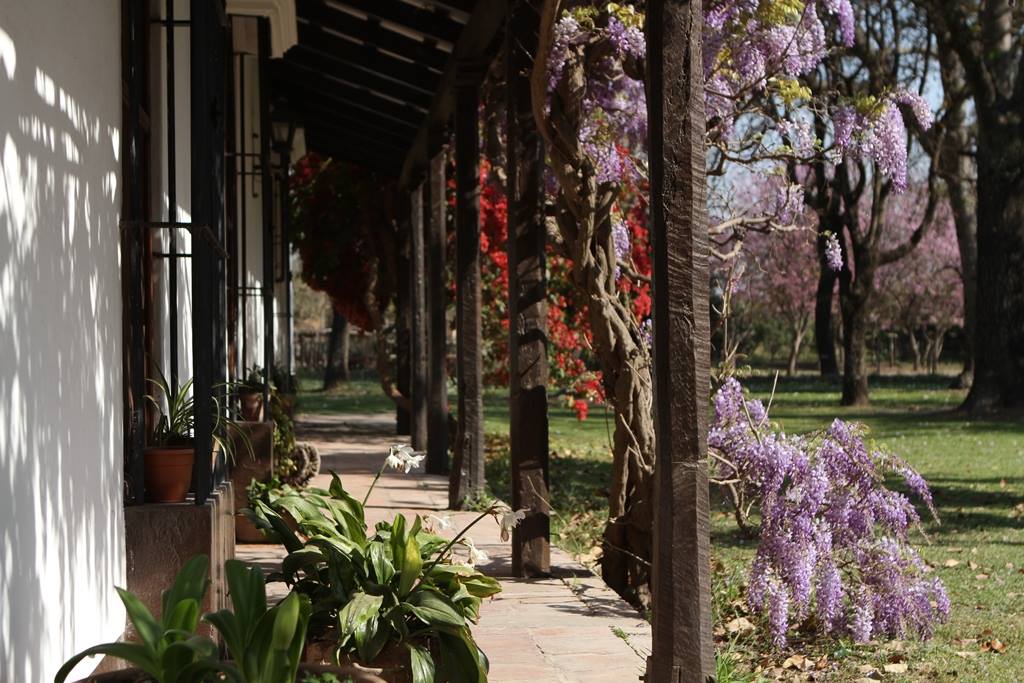Making the most out of the harvest season in Argentina, the Cafayate region in the north offers a unique experience to learn about the winemaking process and have fun in the meantime.
The Fiesta Nacional de la Vendimia is the popular and national harvest festivity in Argentina, very important specially in Mendoza and Salta provinces -both renowned wine regions. The harvest celebrations are a part of the folklore that brings together wine-producers, anyone else who works with the vine and soil, and the rest of the people.
The Cafayate region in Salta, within the heart of the Calchaquí Valleys, is surrounded by a beautiful natural sunny landscape that blends mountains and vineyards.
 Dry alluvial grounds, sunny mornings, warm afternoons and chilly nights during the summer that allow a long aging period and also a wide thermal amplitude make of Cafayate an excellent terroir. Vineyards are located up to 3.000 meters above sea level and rain is very scarce, which permits an exceptional growth for grapevines. This microclimate and the unique characteristics of the area originate different and original wines, with a strong personality and of a long-lasting fruity and savory taste.
Dry alluvial grounds, sunny mornings, warm afternoons and chilly nights during the summer that allow a long aging period and also a wide thermal amplitude make of Cafayate an excellent terroir. Vineyards are located up to 3.000 meters above sea level and rain is very scarce, which permits an exceptional growth for grapevines. This microclimate and the unique characteristics of the area originate different and original wines, with a strong personality and of a long-lasting fruity and savory taste.
If you happen to visit Salta during the harvest season – from late February to the end of March – make sure to pass by Cafayate to take part of the festivity and also try a fun experience in this wine region.

Joined by wine specialists, visit a selected local vineyard to learn about the harvest and production techniques, from the grapevines to the final wine. They will explain the differences between the grape varieties, what are their characteristics and how they are trimmed and harvested. Also you will find about the work at the vineyard, who works there and what are their tasks.
Once you have learn the basics and harvesting techniques, it´s time to get your hands dirty! You will be provided with the tools required for the task: trimming scissors and a basket to keep the grapes. Now you may walk around the vineyard and relax to carry on with the task in hand. It is important to observe the fruits to pick the right ones, those that have better coloring and no visible insect bites or marks. Using the scissors, gently proceed to cut the selected bunch and place it carefully in the basket, trying not to squeeze them.

If you’re in the mood for a bit of competition, the guides will organize a game for the visitors and compete for a prize to be the one that collects the most grapes in a time frame.
After the fun harvest practice, you will enjoy a wine tasting to try the different varieties obtained from the grapevines. Generally -depending on the vineyard you visit- these are Malbec, Cabernet Sauvignon and Torrontés, the typical fruity and dry fine white wine from this zone that currently makes of Cafayate a world famous wine region.

La Vendimia has become an annual ritual, reaching more and more fans worldwide. What was born behind doors inside every winery, in the end got the support of the government and several prestigious local institutions, becoming today an important national event and celebration and bringing together wine lovers from all over. An excellent cultural and gourmet opportunity to visit vineyards, meet local people and -of course- taste flavourful fine wines.
GENERAL INFORMATION
- Available only from February 24th to the end of March (harvest period).
- 3 hs private service, min. 2 pax required.
- Operates daily am or pm, previous reservation required. Activity subject to availability
- Includes harvest practice, wine tasting and souvenir pictures of the experience.
- We recommend dressing comfortably for a day outdoors, wear sporty shoes, sunscreen & hat/cap.
- Transfers from hotels in Cafayate only and up to 4 people are included. For more than 4 pax and/or from Salta city, transfers should be requested separately.


























